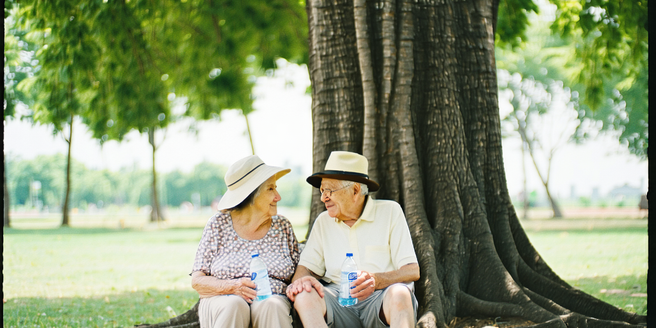
Understanding the Risks of Heatwaves
Heatwaves are prolonged periods of excessively hot weather, which may be accompanied by high humidity. They can have severe impacts on health, ranging from dehydration and heat exhaustion to life-threatening heat stroke. Vulnerable populations such as the elderly, young children, and those with chronic illnesses are at greater risk. It’s crucial to be aware of the dangers, monitor weather forecasts, and be prepared. Taking swift action during these times can be the difference between safety and harm. Limit outdoor activities during peak heat, use sunscreen, and stay informed by accessing reliable sources of weather updates. Recognizing the symptoms of heat-related illnesses and knowing how to respond effectively can prevent severe health outcomes.
Staying Hydrated: Essential Strategies
Staying hydrated is paramount during a heatwave. Begin by drinking plenty of water, even if you don’t feel thirsty. It’s also helpful to set reminders for yourself to drink water regularly throughout the day. Avoid alcohol, caffeine, and sugary drinks as they can exacerbate dehydration. Have a bottle of water with you during the day and encourage regular sips. Incorporate hydrating foods like watermelon, cucumbers, and oranges into your diet. These foods not only provide water but are also rich in essential nutrients and electrolytes necessary for maintaining fluid balance. Ensure children, pets, and the elderly in your care are drinking enough fluids. Remember, staying proactive about hydration can significantly reduce the risk of heat-related complications.
Choosing the Right Clothing for Hot Weather
Wearing the right clothing in hot weather can help regulate body temperature and reduce the risk of heat-related illnesses. Opt for lightweight, loose-fitting, and light-colored clothes made from natural fabrics like cotton, linen, or bamboo that allow your body to breathe. Avoid dark colors as they absorb more heat. It’s important to stay hydrated by drinking plenty of water throughout the day. Wearing a wide-brimmed hat can provide shade and protect the face from direct sunlight. Sunglasses with UV protection shield your eyes from harmful ultraviolet rays. Dressing appropriately not only keeps you comfortable but also helps in maintaining a cool and balanced body temperature, essential for staying safe in high heat.
Creating a Cool Environment at Home
Creating a cooler home environment can be an effective way to combat the sweltering heat during a heatwave. Use fans or air conditioning to circulate air; if air conditioning is unavailable, consider spending time in air-conditioned public buildings. Close blinds or curtains to block direct sunlight, especially during peak hours. Staying hydrated by drinking plenty of water is also crucial to maintaining a comfortable body temperature. At night, use breathable bed linens to ensure a restful sleep. Alternatively, placing a damp cloth in front of a fan can simulate a cooling effect. Houseplants like ferns or peace lilies can also help improve indoor air quality and offer a fresh atmosphere. Implementing these strategies can enhance comfort and reduce the risk of heat exhaustion.
Recognizing and Responding to Heat-Related Illnesses
Heat-related illnesses can escalate quickly if not identified and treated promptly. Early signs such as excessive sweating, weakness, dizziness, or nausea could indicate heat exhaustion. If untreated, it can progress to heat stroke, a medical emergency characterized by confusion, rapid pulse, or losing consciousness. It’s crucial to know the difference between heat exhaustion and heat stroke to take appropriate action. Move the affected person to a cool place immediately, loosen clothing, and apply cool, wet cloths or ice packs. Encourage them to sip water if conscious. Seek medical attention immediately if symptoms worsen or do not improve. Being prepared and aware can not only alleviate the immediate impact but can also save lives.
